22 Historical Moments Brought To Life With Color
Nathan Johnson
Published
09/30/2018
in
wow
Stories from the past that have forever shaped our world.
- List View
- Player View
- Grid View
Advertisement
-
1.
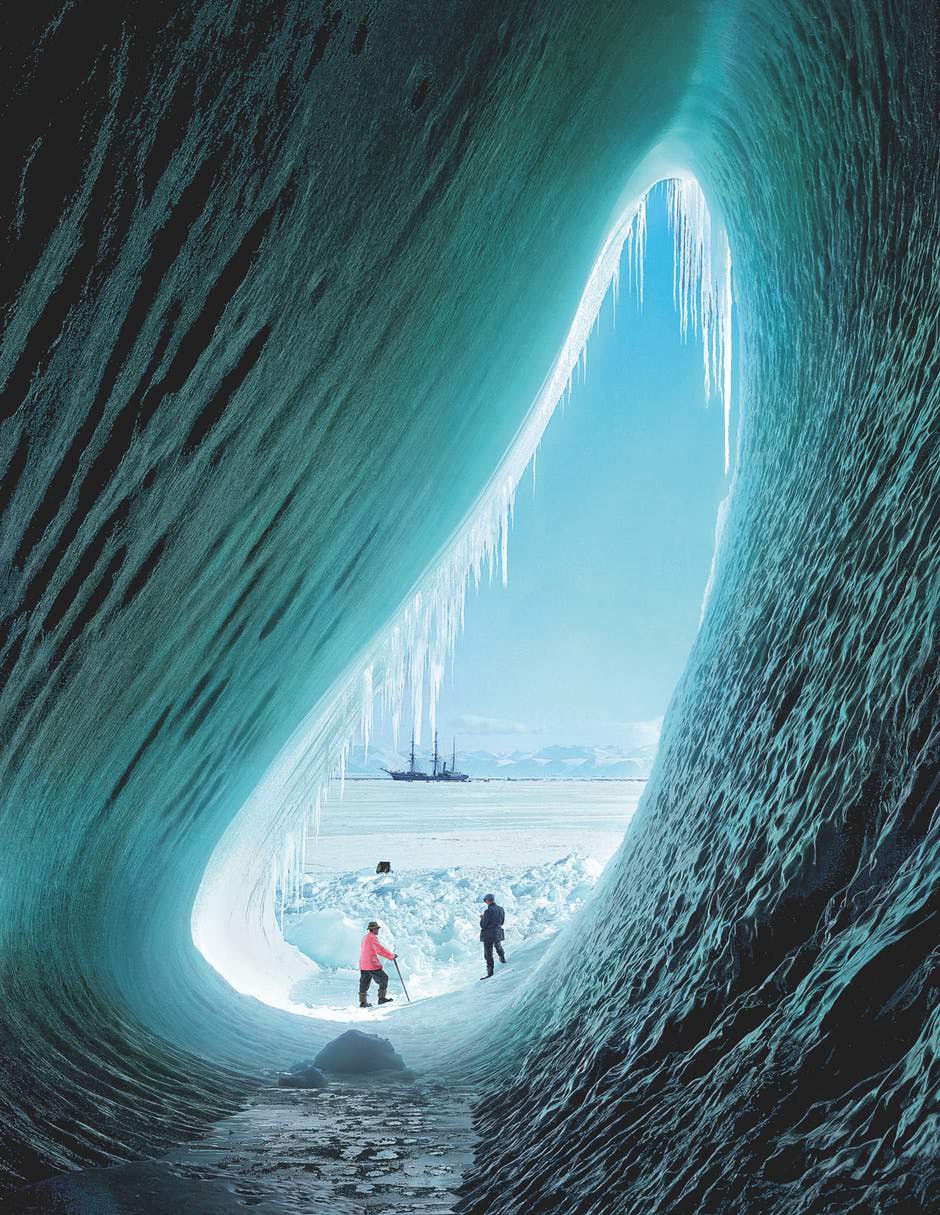 "Terra Nova" The South Pole was the target of the Terra Nova Expedition by Captain Robert Falcon Scott, who launched in June 1910 with the same named vessel and a crew of 65 from Cardiff, Wales. Antarctica already had many researchers, but never before had anyone reached the South Pole, Scott wanted to be first. Shortly after landing in the Antarctic expedition photographer Herbert Posting took this photo: The view from a grotto in an iceberg on the geologist Thomas Griffith Taylor and the meteorologist Charles Wright, her ship Terra Nova can be seen in the background. On January 17, 1912, they finally reached the South Pole and came across a tent with a Norwegian flag. The explorer Roald Amundsen had come to them about five weeks earlier. On their return journey, Scott and the other men died in the ice.
"Terra Nova" The South Pole was the target of the Terra Nova Expedition by Captain Robert Falcon Scott, who launched in June 1910 with the same named vessel and a crew of 65 from Cardiff, Wales. Antarctica already had many researchers, but never before had anyone reached the South Pole, Scott wanted to be first. Shortly after landing in the Antarctic expedition photographer Herbert Posting took this photo: The view from a grotto in an iceberg on the geologist Thomas Griffith Taylor and the meteorologist Charles Wright, her ship Terra Nova can be seen in the background. On January 17, 1912, they finally reached the South Pole and came across a tent with a Norwegian flag. The explorer Roald Amundsen had come to them about five weeks earlier. On their return journey, Scott and the other men died in the ice. -
2.
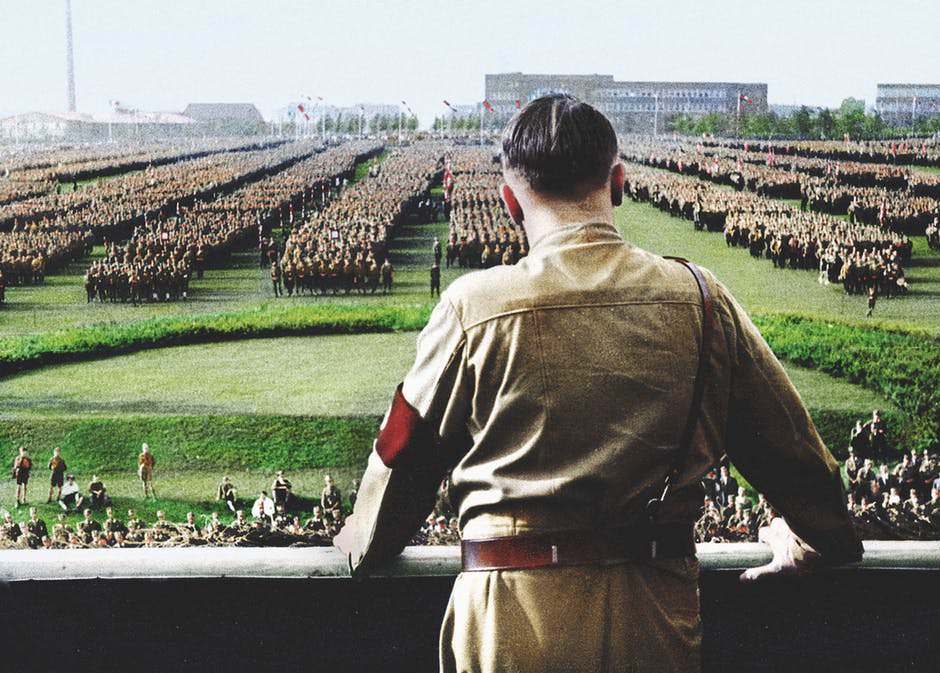 "The leader" A combination of Hitler's personal charisma, the brutal approach of the so-called brown shirts of Sturmabteilung (SA) under Ernst Röhm and a massive propaganda campaign coordinated by Joseph Goebbels made the National Socialist German Workers Party (NSDAP) in November 1932 Germany's largest political party. In the spring of 1933 her leader Adolf Hitler had already become dictator of Germany. As Reich Chancellor and from August 1934 also as Reich President, Hitler initiated a Nazification of German public life and a remilitarization. Among other things, all German forces had to take an oath on their leader and not as before on their nation. In the photo he can be seen in front of uniformed units at a rally in Dortmund.
"The leader" A combination of Hitler's personal charisma, the brutal approach of the so-called brown shirts of Sturmabteilung (SA) under Ernst Röhm and a massive propaganda campaign coordinated by Joseph Goebbels made the National Socialist German Workers Party (NSDAP) in November 1932 Germany's largest political party. In the spring of 1933 her leader Adolf Hitler had already become dictator of Germany. As Reich Chancellor and from August 1934 also as Reich President, Hitler initiated a Nazification of German public life and a remilitarization. Among other things, all German forces had to take an oath on their leader and not as before on their nation. In the photo he can be seen in front of uniformed units at a rally in Dortmund. -
3.
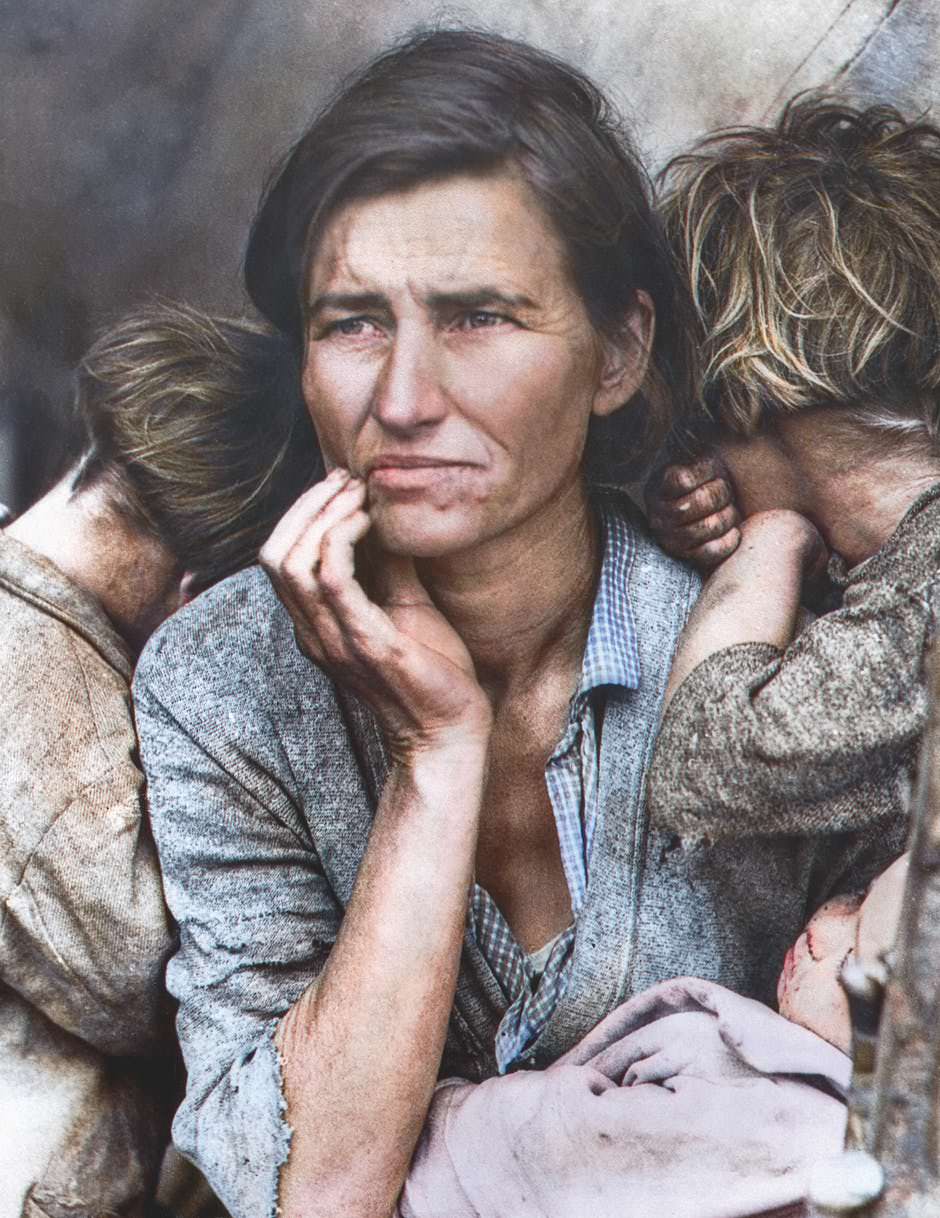 The photo of Florence Owens (32) with her daughters Katherine and Norma became a symbol of misery during the economic review of the United States of America in the 1930s. There was little work, families were destitute, droughts had turned millions of acres of farmland into a desert. The portrait was taken at a pea picker camp on the edge of Highway 101 in California. Florence Owens was typical of the time. She was descended from displaced Native Americans and spent her life pocketing ten children of four different men and moving across the country in search of work. The photo was taken by Dorothea Lange, a 40-year-old photographer who, on behalf of US President Franklin D. Roosevelt's relocation agency, shot at all those portraits that had lost their homes and jobs due to the 1929 Wall Street crash. Long boss, Roy Emerson Stryker, described the recording as the "ultimate" photo of the age.
The photo of Florence Owens (32) with her daughters Katherine and Norma became a symbol of misery during the economic review of the United States of America in the 1930s. There was little work, families were destitute, droughts had turned millions of acres of farmland into a desert. The portrait was taken at a pea picker camp on the edge of Highway 101 in California. Florence Owens was typical of the time. She was descended from displaced Native Americans and spent her life pocketing ten children of four different men and moving across the country in search of work. The photo was taken by Dorothea Lange, a 40-year-old photographer who, on behalf of US President Franklin D. Roosevelt's relocation agency, shot at all those portraits that had lost their homes and jobs due to the 1929 Wall Street crash. Long boss, Roy Emerson Stryker, described the recording as the "ultimate" photo of the age. -
4.
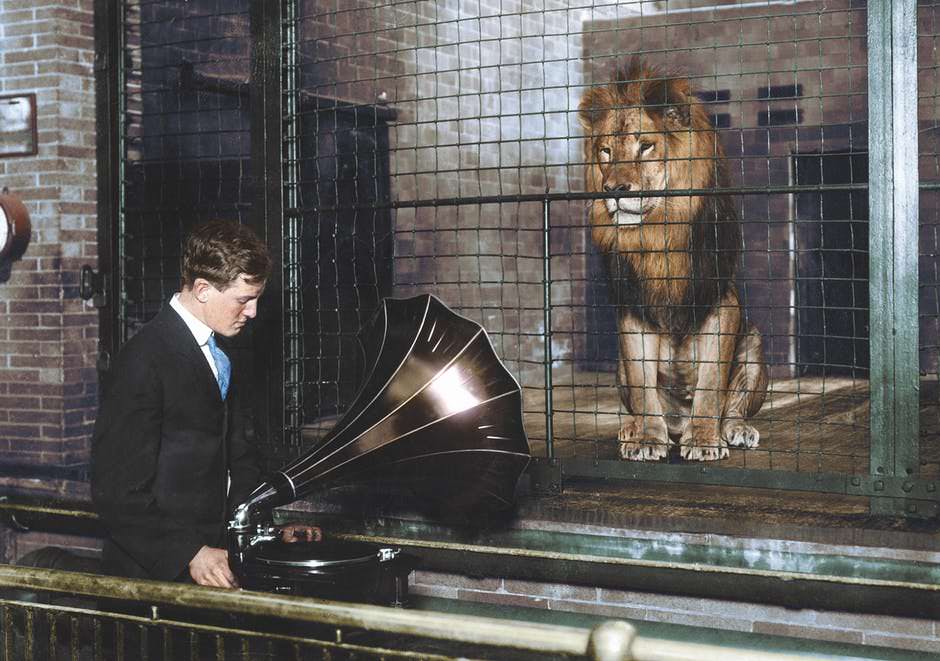 The Gramophone In 1878, Thomas Edison reclaims the patent for his phonograph, and a quarter of a century later the mass-produced gramophone (originally a brand name). So the device from Emil Berliner, a German-born business executive, was flat, pressed slices of shellac (shellac) that were easy to handle for consumption *. In 1909, the largest gramophone label of his master's voice was founded, on the logo is a nipple of the voice of his master listened. This photo is shot by Philipp Kester. He staged similar pictures with a camel, a giraffe and an elephant. In the 1900s, we have the gramophone other world-moving products on the consumer market. These include gasoline-powered cars from Daimler, Benz or Ford, General Electric's toasters, Gillette razors, Kellogg cornflakes and a Kodak Brownie camera. Vacuum cleaners, windscreen wipers, air conditioning systems and various plastics were also discovered during these years, especially in the USA.
The Gramophone In 1878, Thomas Edison reclaims the patent for his phonograph, and a quarter of a century later the mass-produced gramophone (originally a brand name). So the device from Emil Berliner, a German-born business executive, was flat, pressed slices of shellac (shellac) that were easy to handle for consumption *. In 1909, the largest gramophone label of his master's voice was founded, on the logo is a nipple of the voice of his master listened. This photo is shot by Philipp Kester. He staged similar pictures with a camel, a giraffe and an elephant. In the 1900s, we have the gramophone other world-moving products on the consumer market. These include gasoline-powered cars from Daimler, Benz or Ford, General Electric's toasters, Gillette razors, Kellogg cornflakes and a Kodak Brownie camera. Vacuum cleaners, windscreen wipers, air conditioning systems and various plastics were also discovered during these years, especially in the USA. -
5.
 The first "World Exhibition" In the first world exhibition in 1851 there were more than 100,000 objects to see. Around six million visitors traveled to the specially constructed Crystal Palace in London, marveling at locomotives, tapestries, porcelain, silks, jewels (including the giant Koh-i-Noor diamond and a 50-kilogram gold lump), a steam hammer, a Printing press, a Canadian fire engine, a foldable piano and various armor of the Cossacks from Russia. After the end of the exhibition, the Crystal Palace was rebuilt in 1854 south of the Thames in Sydenham. This year also comes the photo. The World Expo has been expanded to include new exhibits. Including two colossi of alabaster gypsum from the temple Abu Simbel in Egypt.
The first "World Exhibition" In the first world exhibition in 1851 there were more than 100,000 objects to see. Around six million visitors traveled to the specially constructed Crystal Palace in London, marveling at locomotives, tapestries, porcelain, silks, jewels (including the giant Koh-i-Noor diamond and a 50-kilogram gold lump), a steam hammer, a Printing press, a Canadian fire engine, a foldable piano and various armor of the Cossacks from Russia. After the end of the exhibition, the Crystal Palace was rebuilt in 1854 south of the Thames in Sydenham. This year also comes the photo. The World Expo has been expanded to include new exhibits. Including two colossi of alabaster gypsum from the temple Abu Simbel in Egypt. -
6.
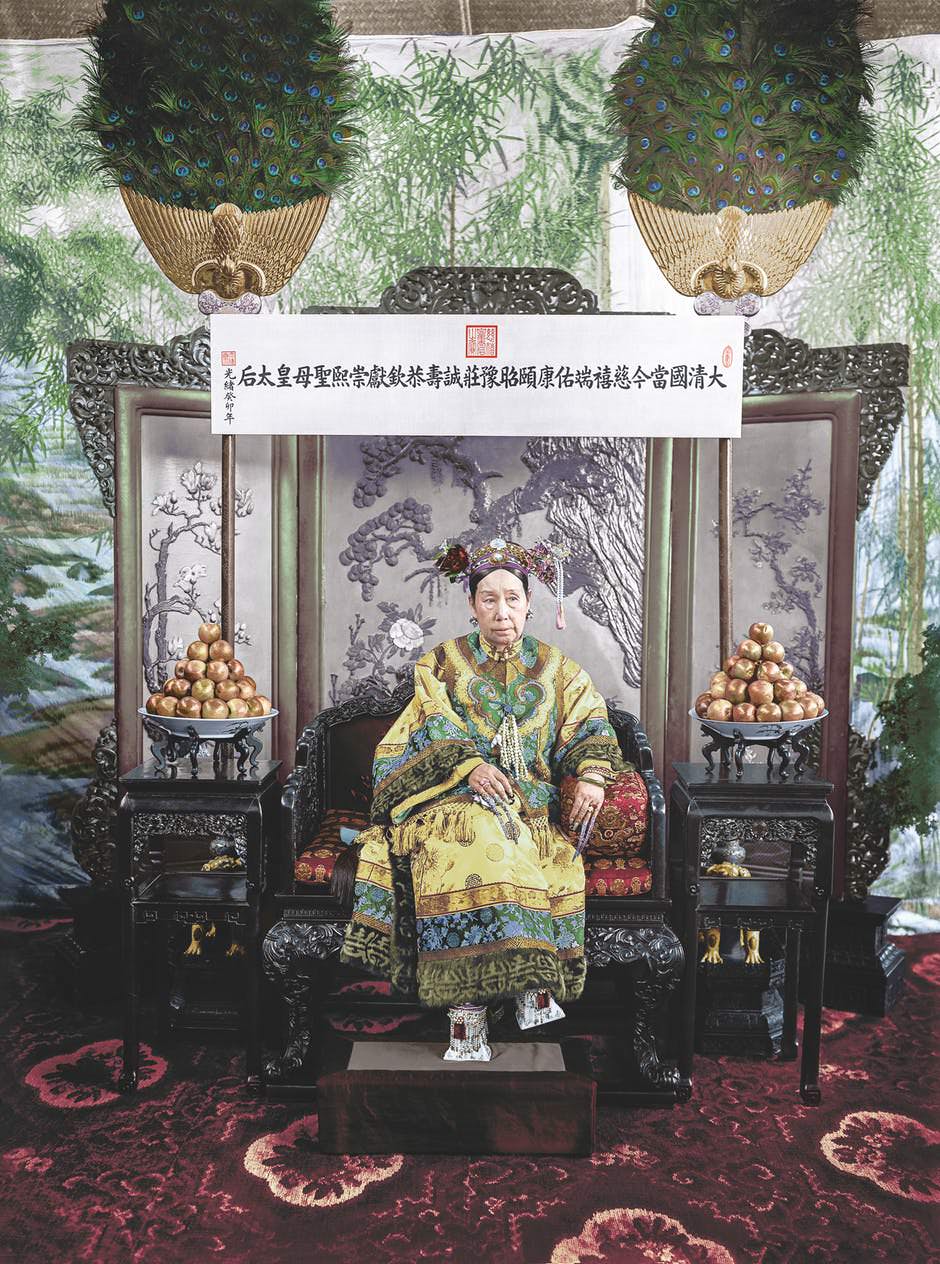 After the Second Opium War, when Emperor Xianfeng fled Beijing with his Qing Dynasty, a politically talented woman came to power: Empress Dowager Cixi. Together with the highest-ranking Empress Dowager Cian Cixi took over the regency for her still underage son Tongzhi (1856-1875, Emperor from 1861) and after his early death even for her nephew Guangxu (Emperor from 1875 to 1908). Cixi and Cian ruled out of the background as women were not officially allowed to attend the governmental meetings of male incumbents. Cixi pursued an open but authoritarian policy toward Western technology and educational issues, often causing problems in her conservative environment. The photo shows Cixi in 1903, five years before her death. At that time she had been in control of China for four decades. The photo shot diplomat son and amateur photographer Xunling.
After the Second Opium War, when Emperor Xianfeng fled Beijing with his Qing Dynasty, a politically talented woman came to power: Empress Dowager Cixi. Together with the highest-ranking Empress Dowager Cian Cixi took over the regency for her still underage son Tongzhi (1856-1875, Emperor from 1861) and after his early death even for her nephew Guangxu (Emperor from 1875 to 1908). Cixi and Cian ruled out of the background as women were not officially allowed to attend the governmental meetings of male incumbents. Cixi pursued an open but authoritarian policy toward Western technology and educational issues, often causing problems in her conservative environment. The photo shows Cixi in 1903, five years before her death. At that time she had been in control of China for four decades. The photo shot diplomat son and amateur photographer Xunling. -
7.
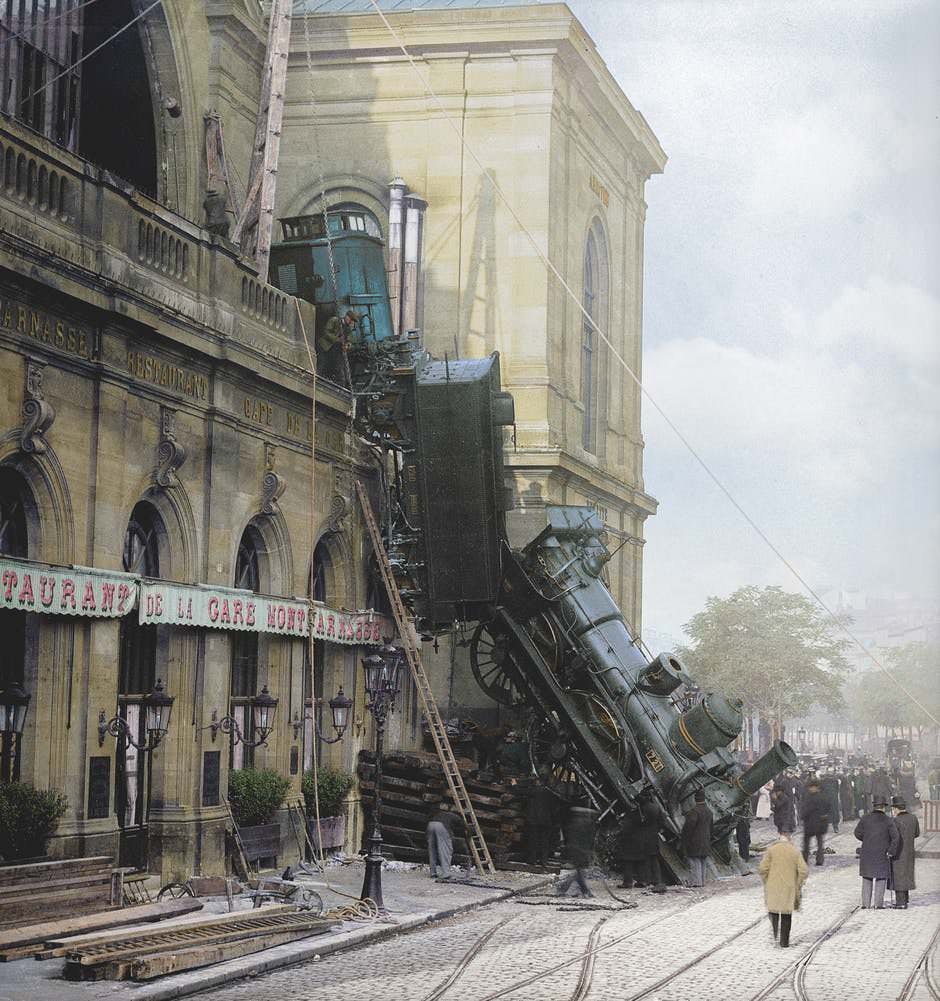 The accident on Montparnasse It is one of the most famous railway accidents in history: the accident at the Montparnasse train station in Paris on 22 October 1895. A train that drove from Granville to Paris did not come to a halt at the end of the track but overflowed both the buffer stop and the platform , then broke through the outer wall of the terminus and crashed on the Place de Rennes. Dozens of Parisian photographers came running to capture this spectacular accident with their cameras. This photo was published by the agency Léon & Lévy, which specialized in postcards. In the derailment, only one person died: Marie Augustine Aguillard, a newspaper saleswoman, who was killed by falling debris.
The accident on Montparnasse It is one of the most famous railway accidents in history: the accident at the Montparnasse train station in Paris on 22 October 1895. A train that drove from Granville to Paris did not come to a halt at the end of the track but overflowed both the buffer stop and the platform , then broke through the outer wall of the terminus and crashed on the Place de Rennes. Dozens of Parisian photographers came running to capture this spectacular accident with their cameras. This photo was published by the agency Léon & Lévy, which specialized in postcards. In the derailment, only one person died: Marie Augustine Aguillard, a newspaper saleswoman, who was killed by falling debris. -
8.
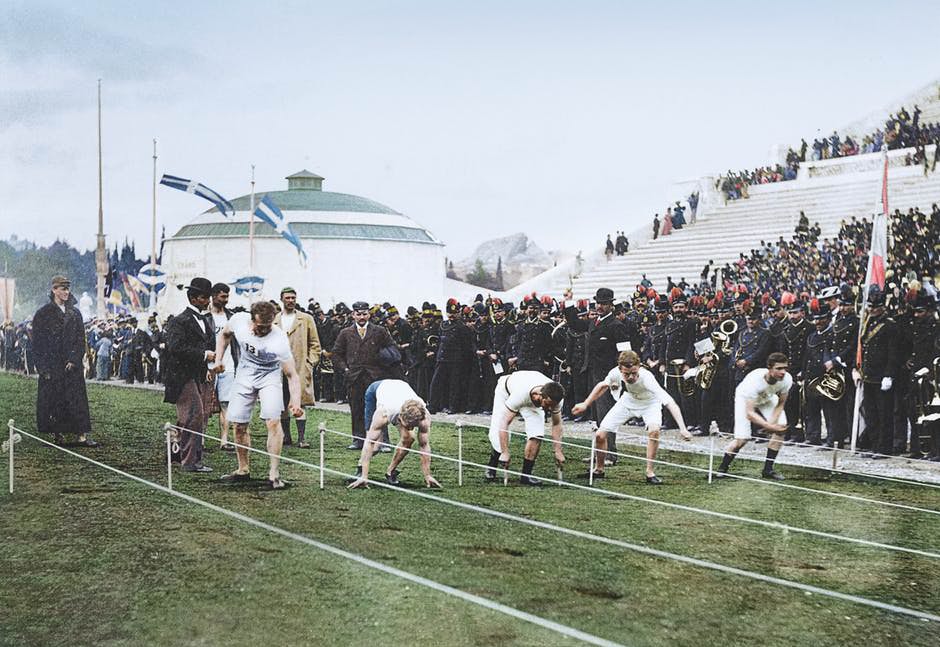 New gods on the Olympus This photo was taken during the first modern Olympiad under the supervision of the International Olympic Committee (IOC) 1896 in Athens. It shows the participants of the final 100-meter run, the American Thomas Burke won with 11.8 seconds. On the second track from the left you can see him at his then unusual low start. The games in Athens were the starting signal for the regular hosting of summer and from 1924 to winter games, which were interrupted only by the two world wars.
New gods on the Olympus This photo was taken during the first modern Olympiad under the supervision of the International Olympic Committee (IOC) 1896 in Athens. It shows the participants of the final 100-meter run, the American Thomas Burke won with 11.8 seconds. On the second track from the left you can see him at his then unusual low start. The games in Athens were the starting signal for the regular hosting of summer and from 1924 to winter games, which were interrupted only by the two world wars. -
9.
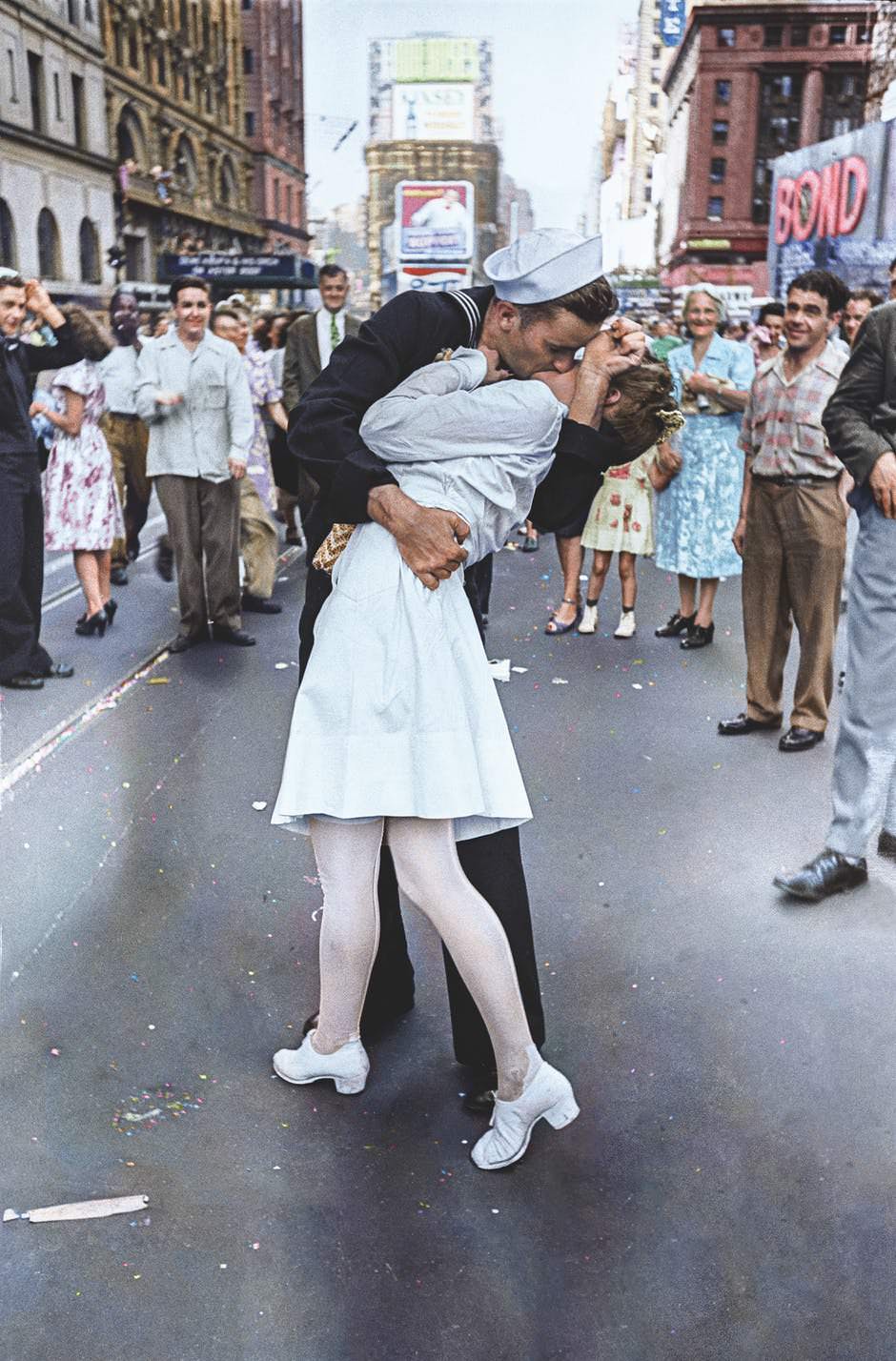 "VJ Day" On August 14, 1945 Manhattan was in ecstasy. The crowds celebrated the "Victory over Japan Day" in the streets of the city, the capitulation of Japan. Among them was the photographer Alfred Eisenstaedt. He discovered a sailor who cockily grabbed "every girl in sight". So Eisenstaedt ran after this sailor and photographed how he wrapped his arms around a nurse in New York's Times Square and kissed uncontrollably while she was still clutching her purse. A week later, the photo was published in Life Magazine and thus a symbol of joy over the end of the war. The names of the two participants remained unknown.
"VJ Day" On August 14, 1945 Manhattan was in ecstasy. The crowds celebrated the "Victory over Japan Day" in the streets of the city, the capitulation of Japan. Among them was the photographer Alfred Eisenstaedt. He discovered a sailor who cockily grabbed "every girl in sight". So Eisenstaedt ran after this sailor and photographed how he wrapped his arms around a nurse in New York's Times Square and kissed uncontrollably while she was still clutching her purse. A week later, the photo was published in Life Magazine and thus a symbol of joy over the end of the war. The names of the two participants remained unknown. -
10.
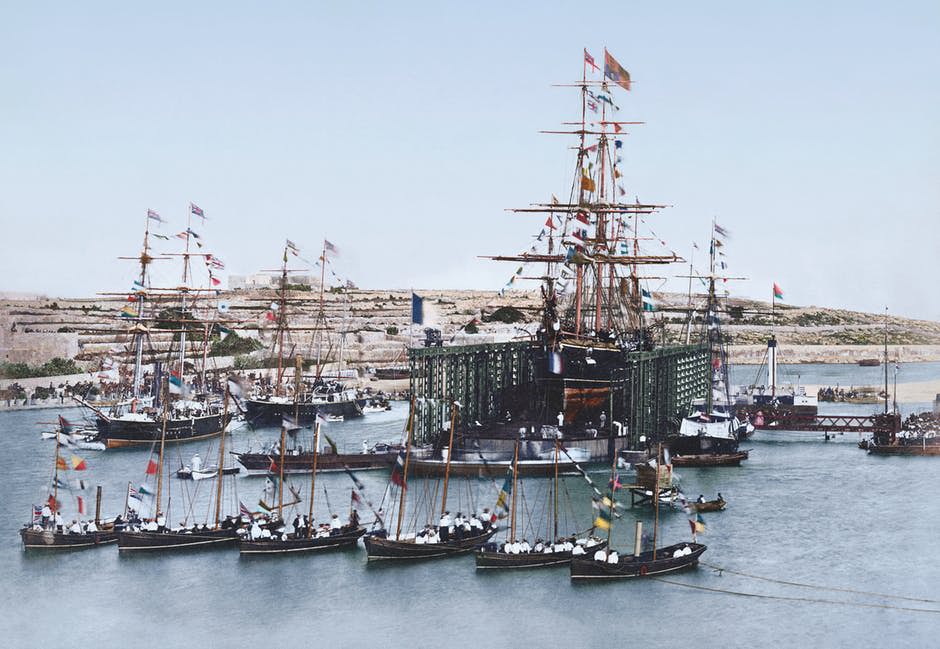 Suez Canal. The idea for the Suez Canal, an artificial waterway dug over the Egyptian desert on the isthmus of Suez for over 160 kilometers, came from French diplomat Ferdinand de Lesseps. He had enough influence on the Wali (viceroy) of Egypt to convince him of the idea. On 16 and 17 November 1869, the canal was opened in the course of great celebrations for ships of all nations. The canal connects the Mediterranean Sea with the Red Sea, thus forming the border between Africa and Asia and spares merchant ships the path around Africa. In the following century, Africa became enormously interesting due to the shortened transport routes for Europe and the importance of the continent for world trade increased - and with it its susceptibility to colonial claims and exploitation.
Suez Canal. The idea for the Suez Canal, an artificial waterway dug over the Egyptian desert on the isthmus of Suez for over 160 kilometers, came from French diplomat Ferdinand de Lesseps. He had enough influence on the Wali (viceroy) of Egypt to convince him of the idea. On 16 and 17 November 1869, the canal was opened in the course of great celebrations for ships of all nations. The canal connects the Mediterranean Sea with the Red Sea, thus forming the border between Africa and Asia and spares merchant ships the path around Africa. In the following century, Africa became enormously interesting due to the shortened transport routes for Europe and the importance of the continent for world trade increased - and with it its susceptibility to colonial claims and exploitation. -
11.
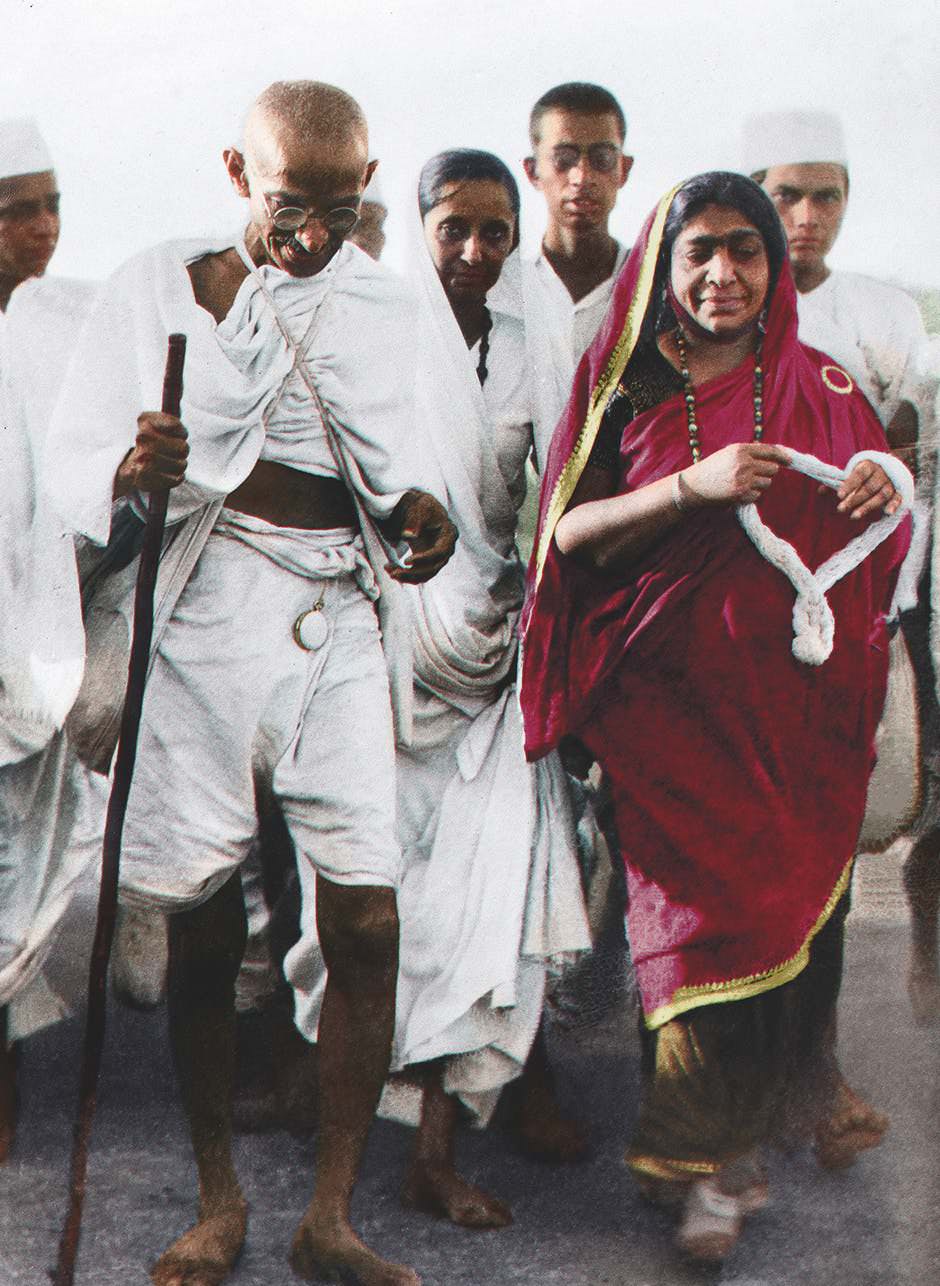 The salt marsh. The Indian lawyer and civil rights campaigner Mohandas Gandhi chose as a tactic against the British rule in India the "Satyagraha", translated into about non-violence. In 1930, his efforts focused on a single commodity: the salt. Under British rule, salt was government-produced, taxed and sold to the Indians at a substantial premium. On March 12, Gandhi left Ahmedabad to start a march of more than 320 kilometers to the Indian west coast, where he wanted to produce salt from seawater in protest. Barely a month later, he reached his destination - along with tens of thousands of people who had followed him. Gandhi was arrested anyway and detained for several weeks. But his non-violent protest had consequences: more salt rebellions and other forms of civil disobedience across India. The Britons responded with their violent crackdown, making the injustice of imperial rule even more apparent to the whole world. The photo shows Gandhi during the salt marsh together with the Indian poet and activist Sarojini Naidu, one of his longtime supporters in India's independence movement.
The salt marsh. The Indian lawyer and civil rights campaigner Mohandas Gandhi chose as a tactic against the British rule in India the "Satyagraha", translated into about non-violence. In 1930, his efforts focused on a single commodity: the salt. Under British rule, salt was government-produced, taxed and sold to the Indians at a substantial premium. On March 12, Gandhi left Ahmedabad to start a march of more than 320 kilometers to the Indian west coast, where he wanted to produce salt from seawater in protest. Barely a month later, he reached his destination - along with tens of thousands of people who had followed him. Gandhi was arrested anyway and detained for several weeks. But his non-violent protest had consequences: more salt rebellions and other forms of civil disobedience across India. The Britons responded with their violent crackdown, making the injustice of imperial rule even more apparent to the whole world. The photo shows Gandhi during the salt marsh together with the Indian poet and activist Sarojini Naidu, one of his longtime supporters in India's independence movement. -
12.
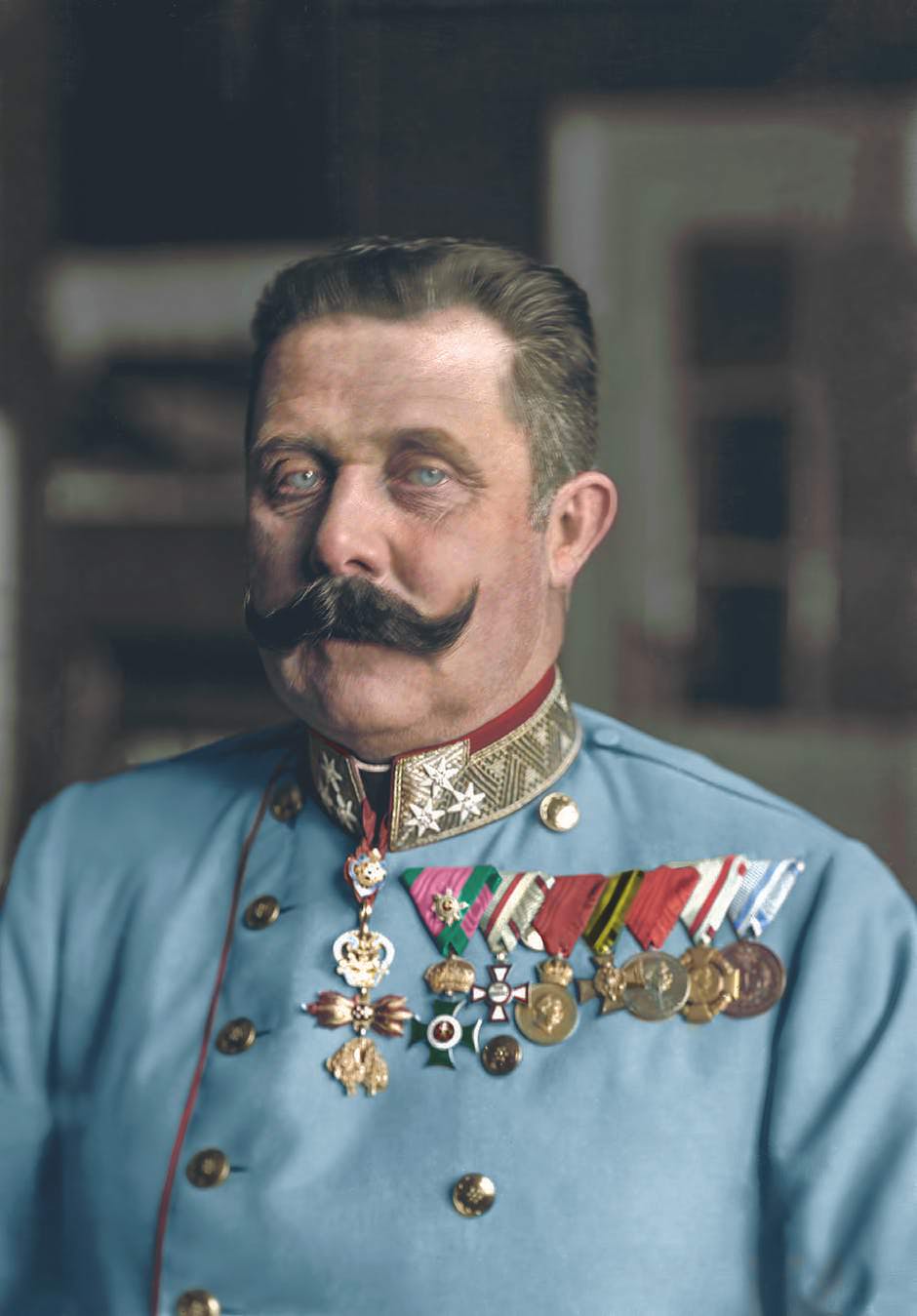 Franz Ferdinand. Franz Ferdinand belonged to the Austrian noble family of the Habsburgs and in 1896 crown prince and heir apparent to the double monarchy Austria-Hungary. Contrary to the then conventions, he married none of the European princesses, but the lady-in-waiting Sophie Chotek. In the late morning of June 28, 1914, the two were shot dead in their car in Sarajevo, the capital of Bosnia and Herzegovina, which had been annexed by Austria. The student Gavrilo Princip was a Yugoslav nationalist and triggered the First World War with his act.
Franz Ferdinand. Franz Ferdinand belonged to the Austrian noble family of the Habsburgs and in 1896 crown prince and heir apparent to the double monarchy Austria-Hungary. Contrary to the then conventions, he married none of the European princesses, but the lady-in-waiting Sophie Chotek. In the late morning of June 28, 1914, the two were shot dead in their car in Sarajevo, the capital of Bosnia and Herzegovina, which had been annexed by Austria. The student Gavrilo Princip was a Yugoslav nationalist and triggered the First World War with his act. -
13.
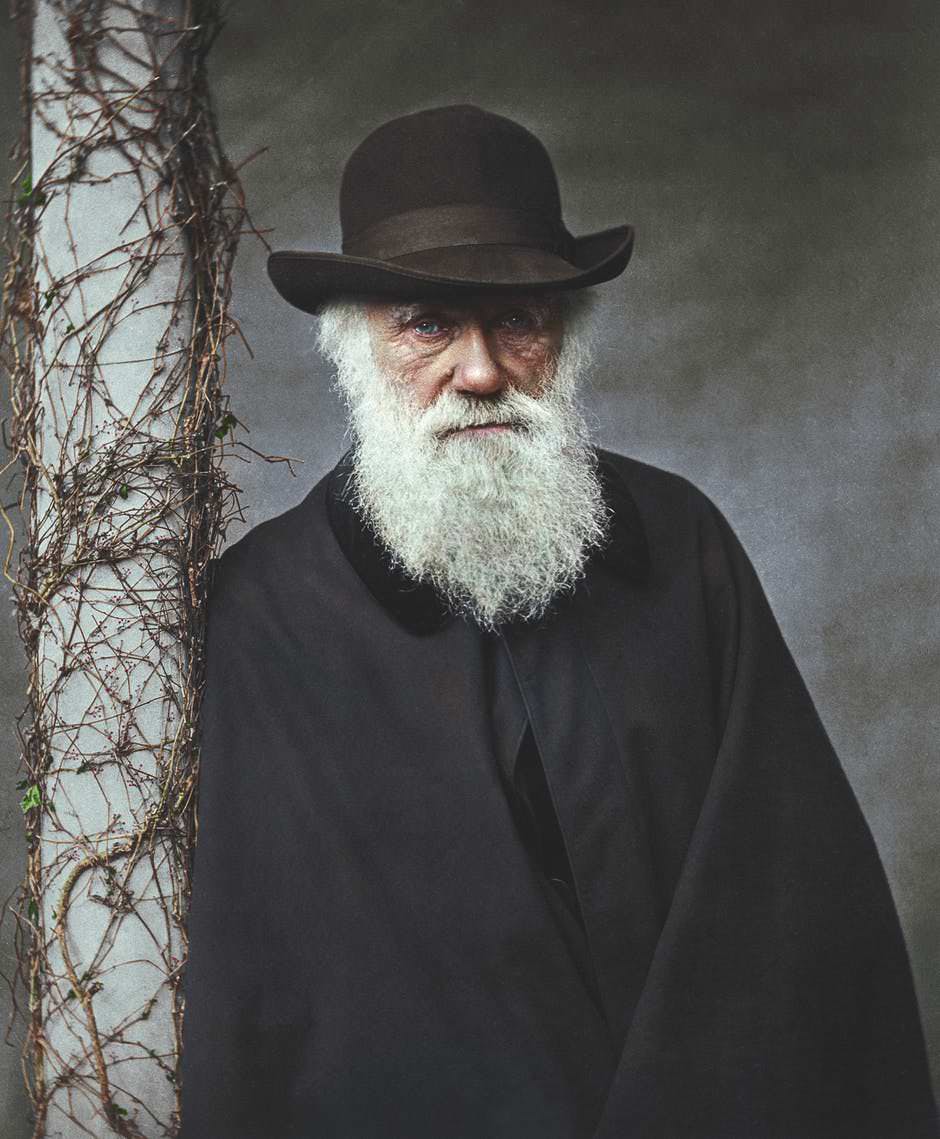 The Origin of the species. The British naturalist Charles Darwin published in 1859 his major work On the Origin of Species (The Origin of Species), which is still the basic work of evolutionary biology. Thus, animal and plant species change by natural selection over long periods of time and all living beings today exist from common ancestors. He questioned the story of creation, which brought many clergymen against him. In 1871 he wrote with The Descent of Man (The Descent of Man) another, similarly controversial recorded work. The photo was taken towards the end of his life in the then famous photo studio Elliot & Fry. In 1882 he died after a long illness.
The Origin of the species. The British naturalist Charles Darwin published in 1859 his major work On the Origin of Species (The Origin of Species), which is still the basic work of evolutionary biology. Thus, animal and plant species change by natural selection over long periods of time and all living beings today exist from common ancestors. He questioned the story of creation, which brought many clergymen against him. In 1871 he wrote with The Descent of Man (The Descent of Man) another, similarly controversial recorded work. The photo was taken towards the end of his life in the then famous photo studio Elliot & Fry. In 1882 he died after a long illness. -
14.
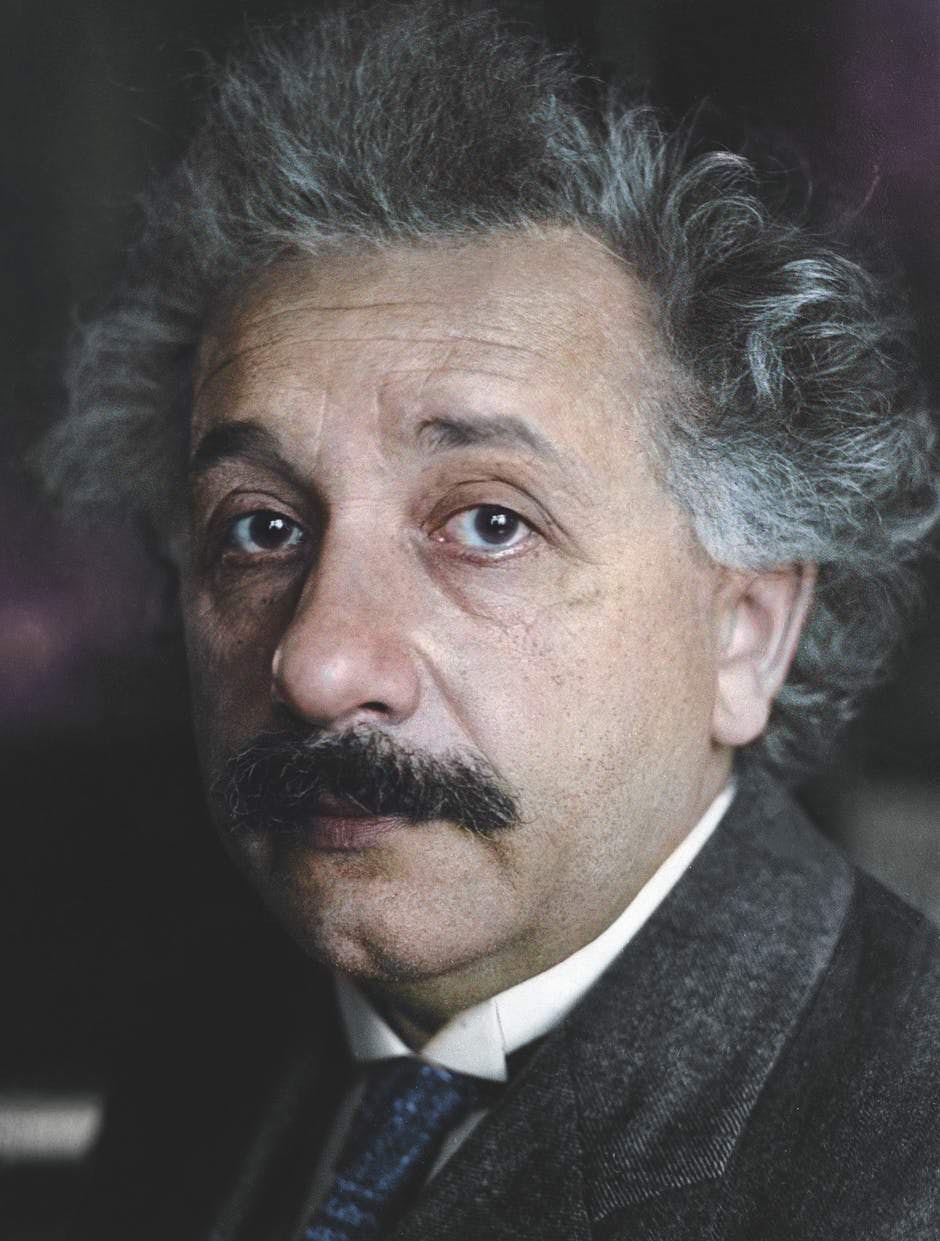 Albert Einstein. He was the first to overturn Isaac Newton's considerations of time, space, energy, and mass, which have been in place for more than 200 years. A German patent examiner named Albert Einstein, seen in this middle-aged photo, turned the scientific understanding of how the universe is constructed on its head. His most famous theory until today probably the special theory of relativity with the equation E = mc². Ten years later Einstein presented a second theory in 1915: the general theory of relativity (ART). In 1921, Einstein won the Nobel Prize in Physics. As a Jew he was forcibly expelled from Germany in 1934 and emigrated to the USA. There he worked until his death in 1955 on his reflections on the universe.
Albert Einstein. He was the first to overturn Isaac Newton's considerations of time, space, energy, and mass, which have been in place for more than 200 years. A German patent examiner named Albert Einstein, seen in this middle-aged photo, turned the scientific understanding of how the universe is constructed on its head. His most famous theory until today probably the special theory of relativity with the equation E = mc². Ten years later Einstein presented a second theory in 1915: the general theory of relativity (ART). In 1921, Einstein won the Nobel Prize in Physics. As a Jew he was forcibly expelled from Germany in 1934 and emigrated to the USA. There he worked until his death in 1955 on his reflections on the universe. -
15.
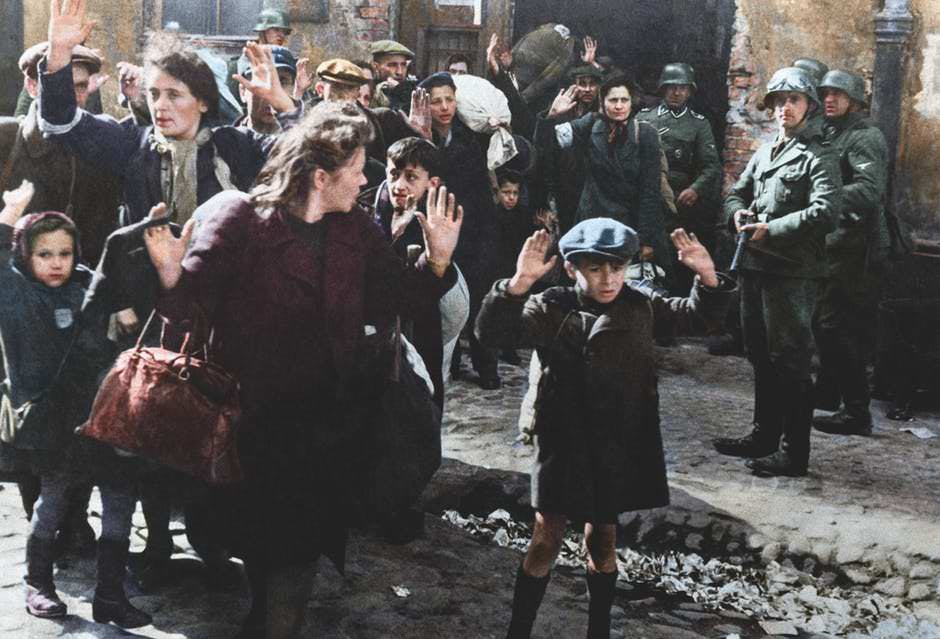 The Warsaw Ghetto. The German army invaded Poland in the autumn of 1939. The large Jewish community in Warsaw was forced to identify with white armbands, their bank accounts were frozen. In 1940, the Jewish population was driven from the suburbs and rural areas to the city center, where a ghetto with a three-meter-high wall was built. Within these walls more than 400,000 people had to live in terrible living conditions over an area of approximately 3.4 square kilometers. A hunger ration of 150 kilocalories per day has been set. The infectious disease typhus spread. In 1942, the Germans began to transport the Jewish citizens in trains to the Treblinka extermination camp and to assassinate them. This photo was taken in 1943 during the Warsaw ghetto uprising. On April 19, rebel armed with petrol bombs and pistols began to fight the Nazis. The uprising lasted for almost four weeks until the ghetto was destroyed in May with blaze and explosive charges and the last prisoners were shot or deported. The identity of the depicted child is unclear. The soldier with the rifle is Josef Blösche, member of the paramilitary Schutzstaffel (SS) of the Nazis, responsible for the execution of hundreds of Jews in Warsaw.
The Warsaw Ghetto. The German army invaded Poland in the autumn of 1939. The large Jewish community in Warsaw was forced to identify with white armbands, their bank accounts were frozen. In 1940, the Jewish population was driven from the suburbs and rural areas to the city center, where a ghetto with a three-meter-high wall was built. Within these walls more than 400,000 people had to live in terrible living conditions over an area of approximately 3.4 square kilometers. A hunger ration of 150 kilocalories per day has been set. The infectious disease typhus spread. In 1942, the Germans began to transport the Jewish citizens in trains to the Treblinka extermination camp and to assassinate them. This photo was taken in 1943 during the Warsaw ghetto uprising. On April 19, rebel armed with petrol bombs and pistols began to fight the Nazis. The uprising lasted for almost four weeks until the ghetto was destroyed in May with blaze and explosive charges and the last prisoners were shot or deported. The identity of the depicted child is unclear. The soldier with the rifle is Josef Blösche, member of the paramilitary Schutzstaffel (SS) of the Nazis, responsible for the execution of hundreds of Jews in Warsaw. -
16.
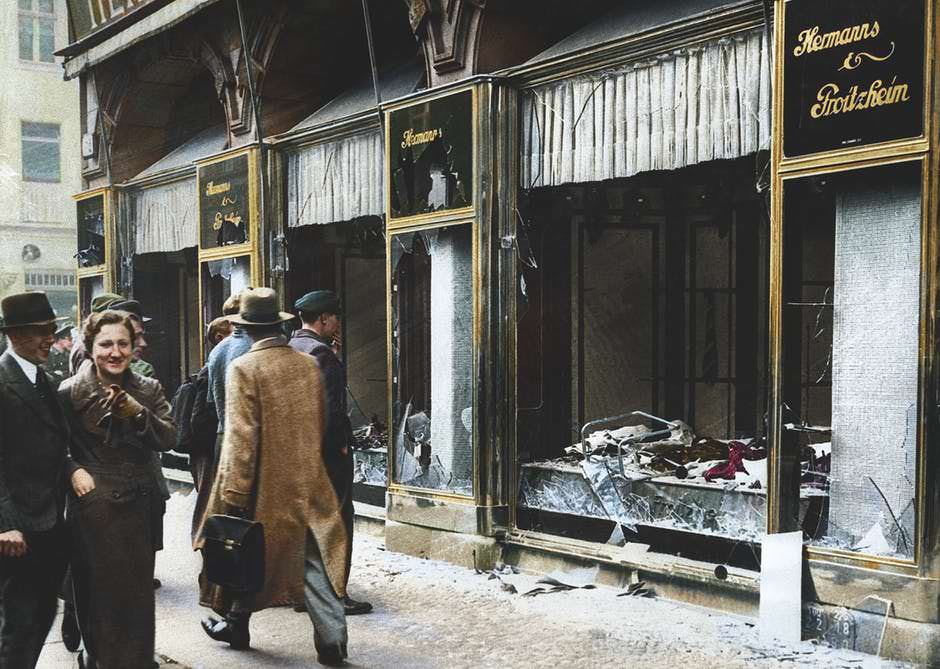 "Kristallnacht" Hitler's Mein Kampf was full of anti-Semitic passages. As chancellor, the harassment, persecution and later mass murder of the Jewish population became a central goal of Nazi policy. When Hitler came to power in 1933, Jews were excluded from many professional fields such as medicine, law, film and journalism. They were not allowed to own farmland. Jewish children were removed from the schools. After the Nuremberg laws passed in 1935, Jewish persons were deprived of their citizenship and their fundamental rights. Mixed marriages were banned, as was the use of the German flag. On the night of November 9 to 10, 1938, SA paramilitaries coordinated the so-called Reichspogromnacht, in which they smashed, burned and destroyed synagogues and Jewish shop fronts, as shown in the photo. Thousands of companies were ruined. It was the result of the escalation of open, brutal violence of anti-Semitic Nazi politics. Goebbels subsequently persuaded foreign media that these pogroms were a spontaneous protest action following the murder of a diplomat named Ernst vom Rath in Paris. This was committed by a teenager named Herschel Grynszpan, a Polish, expelled from Germany Jews. An obvious lie.
"Kristallnacht" Hitler's Mein Kampf was full of anti-Semitic passages. As chancellor, the harassment, persecution and later mass murder of the Jewish population became a central goal of Nazi policy. When Hitler came to power in 1933, Jews were excluded from many professional fields such as medicine, law, film and journalism. They were not allowed to own farmland. Jewish children were removed from the schools. After the Nuremberg laws passed in 1935, Jewish persons were deprived of their citizenship and their fundamental rights. Mixed marriages were banned, as was the use of the German flag. On the night of November 9 to 10, 1938, SA paramilitaries coordinated the so-called Reichspogromnacht, in which they smashed, burned and destroyed synagogues and Jewish shop fronts, as shown in the photo. Thousands of companies were ruined. It was the result of the escalation of open, brutal violence of anti-Semitic Nazi politics. Goebbels subsequently persuaded foreign media that these pogroms were a spontaneous protest action following the murder of a diplomat named Ernst vom Rath in Paris. This was committed by a teenager named Herschel Grynszpan, a Polish, expelled from Germany Jews. An obvious lie. -
17.
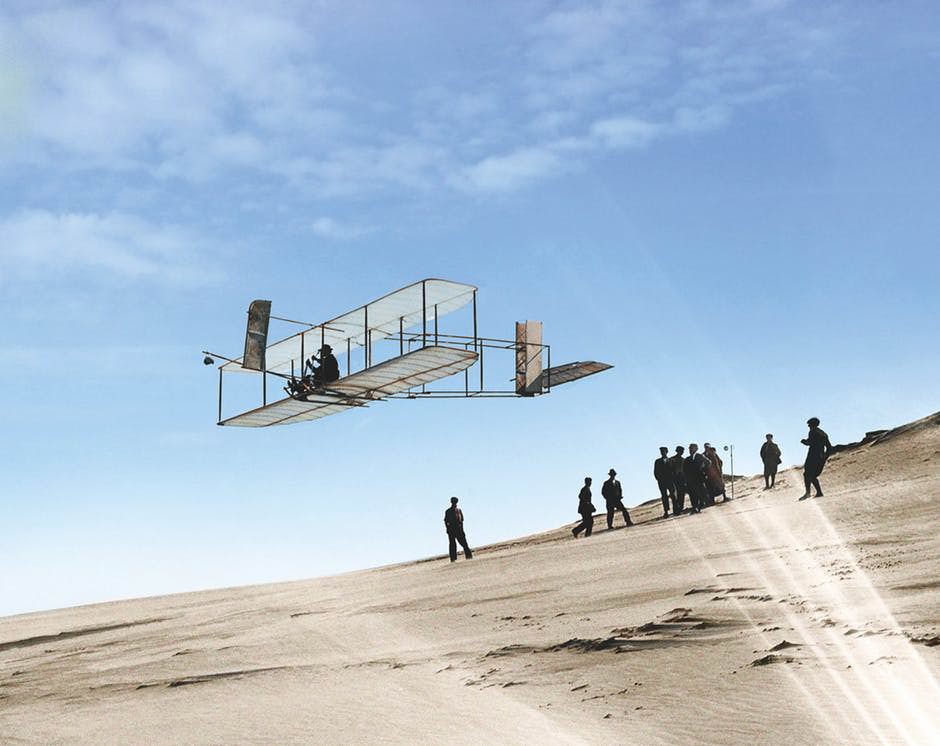 The Wright brothers. It was on the windy dunes of Kill Devil Hills near Kitty Hawk, North Carolina, where the Orville brothers and Wilbur Wright tried more than 700 glider flights. On December 17, 1903, they finally managed the first successful flight with an aircraft that was heavier than air and had an engine. The flight took twelve seconds and went down in history. The brothers called the aircraft Wright Flyer. It was a spruce biplane piloted by a pilot lying on his stomach. After four short flights that day, the fragile device was seized by a strong gust of wind and destroyed. The Wright brothers continued to work on improvements. In 1908, they managed to keep an aircraft in the air for more than an hour. Their public performances in Europe and the US made the two famous. Later, they founded a flight school in Ohio and sold ready-made planes.
The Wright brothers. It was on the windy dunes of Kill Devil Hills near Kitty Hawk, North Carolina, where the Orville brothers and Wilbur Wright tried more than 700 glider flights. On December 17, 1903, they finally managed the first successful flight with an aircraft that was heavier than air and had an engine. The flight took twelve seconds and went down in history. The brothers called the aircraft Wright Flyer. It was a spruce biplane piloted by a pilot lying on his stomach. After four short flights that day, the fragile device was seized by a strong gust of wind and destroyed. The Wright brothers continued to work on improvements. In 1908, they managed to keep an aircraft in the air for more than an hour. Their public performances in Europe and the US made the two famous. Later, they founded a flight school in Ohio and sold ready-made planes. -
18.
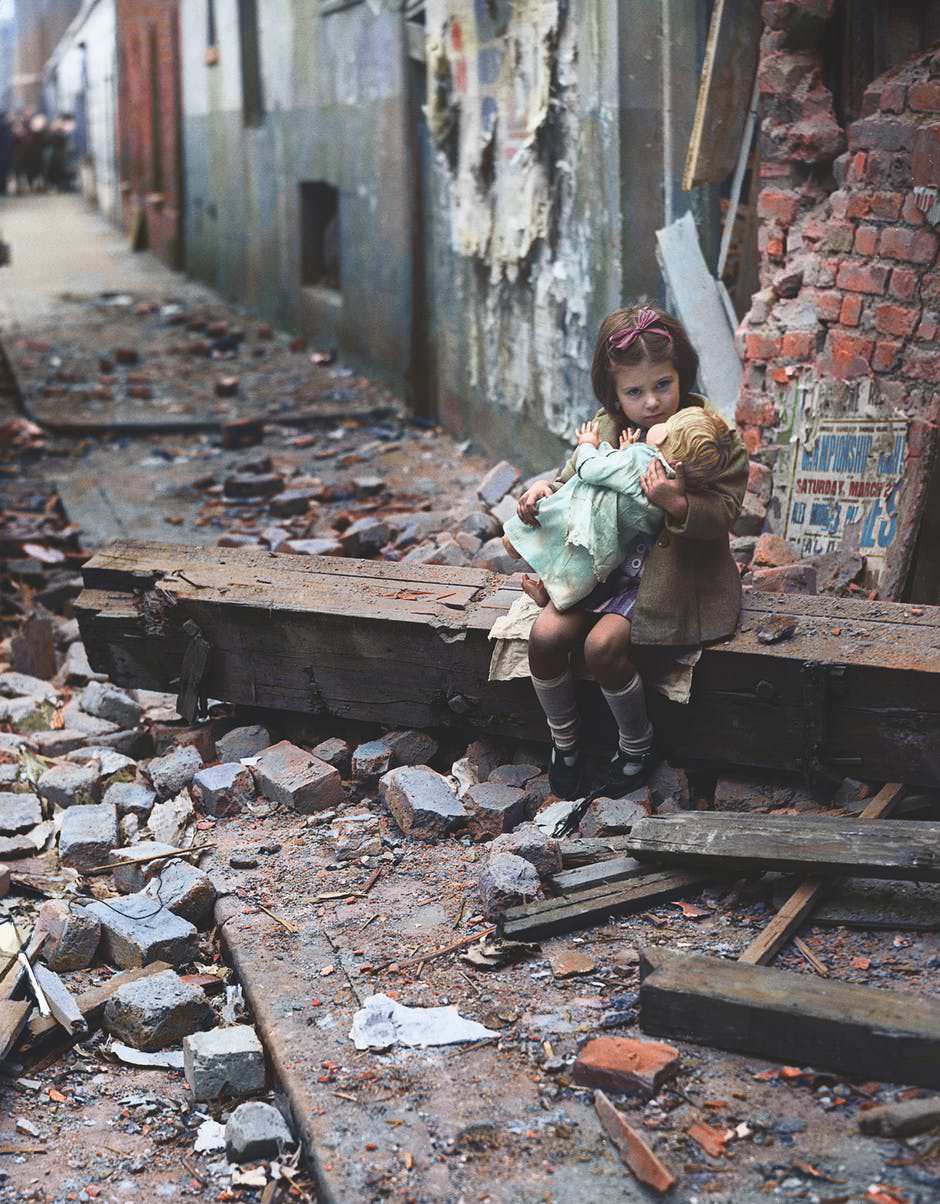 "The Blitz" Since Hitler was unable to carry out an invasion of Great Britain by sea during the Second World War, he launched an air raid, which the Britons called "Blitz." He targeted civilian and industrial targets in London, Hull, Liverpool and Glasgow. Alone on London 18,000 bombs were dropped. The city was attacked during the fall and winter of 1940 for 57 consecutive nights. This staged photograph emphasizes the plight of the children during these bombing raids. During the air raids, more than 40,000 civilians were killed and nearly one million houses destroyed.
"The Blitz" Since Hitler was unable to carry out an invasion of Great Britain by sea during the Second World War, he launched an air raid, which the Britons called "Blitz." He targeted civilian and industrial targets in London, Hull, Liverpool and Glasgow. Alone on London 18,000 bombs were dropped. The city was attacked during the fall and winter of 1940 for 57 consecutive nights. This staged photograph emphasizes the plight of the children during these bombing raids. During the air raids, more than 40,000 civilians were killed and nearly one million houses destroyed. -
19.
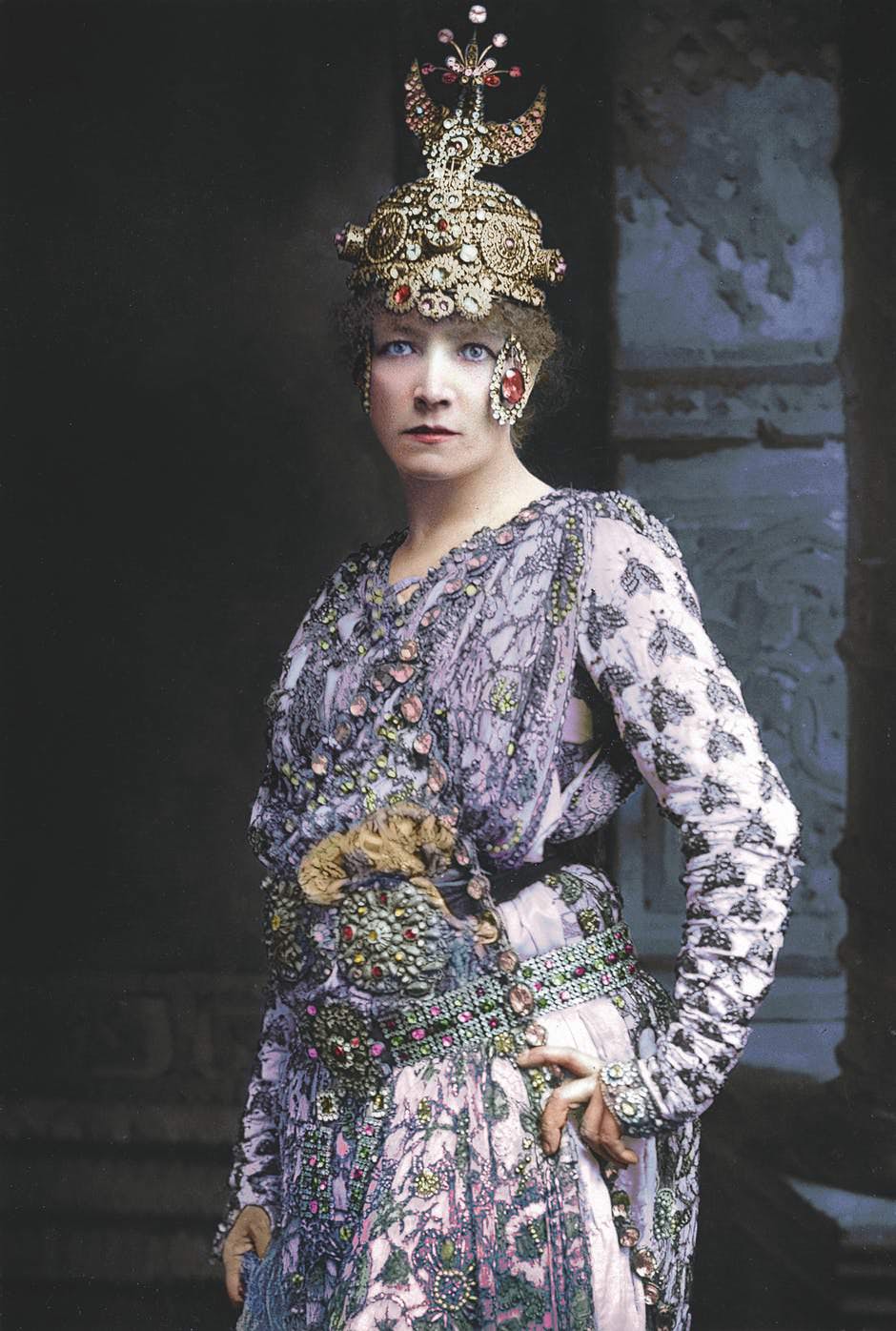 Sarah Bernhardt. The French actress Sarah Bernhardt went on tour in the USA in the years 1891, 1896 and 1901 and thrilled the audience as rarely anyone did before. The spectators jumped from their chairs as she performed in works by famous French playwrights such as Victorien Sardous La Tosca and Edmond Rostand's Cyrano de Bergerac. Bernhardt insisted on taking on the roles of famous men. So she played Shakespeare's Hamlet or Napoleon's son in Rostand's L'Aiglon (The Young Eagle). In this photo from the year 1890 Sarah Bernhardt hatched into the main role of Sardous Théodora. At this time, the "divine Sarah" was considered the best actress in the world. She was known not only for her tremendous stage presence and her unforgettable voice, but also for her temperament. Once she broke an umbrella on the head of a bouncer. At a performance in San Francisco in 1891, she threatened a stagehand with a revolver. In 1915, her right leg had to be amputated after a knee injury, but she continued her work. She died in 1923 while working on a movie in her home in Paris.
Sarah Bernhardt. The French actress Sarah Bernhardt went on tour in the USA in the years 1891, 1896 and 1901 and thrilled the audience as rarely anyone did before. The spectators jumped from their chairs as she performed in works by famous French playwrights such as Victorien Sardous La Tosca and Edmond Rostand's Cyrano de Bergerac. Bernhardt insisted on taking on the roles of famous men. So she played Shakespeare's Hamlet or Napoleon's son in Rostand's L'Aiglon (The Young Eagle). In this photo from the year 1890 Sarah Bernhardt hatched into the main role of Sardous Théodora. At this time, the "divine Sarah" was considered the best actress in the world. She was known not only for her tremendous stage presence and her unforgettable voice, but also for her temperament. Once she broke an umbrella on the head of a bouncer. At a performance in San Francisco in 1891, she threatened a stagehand with a revolver. In 1915, her right leg had to be amputated after a knee injury, but she continued her work. She died in 1923 while working on a movie in her home in Paris. -
20.
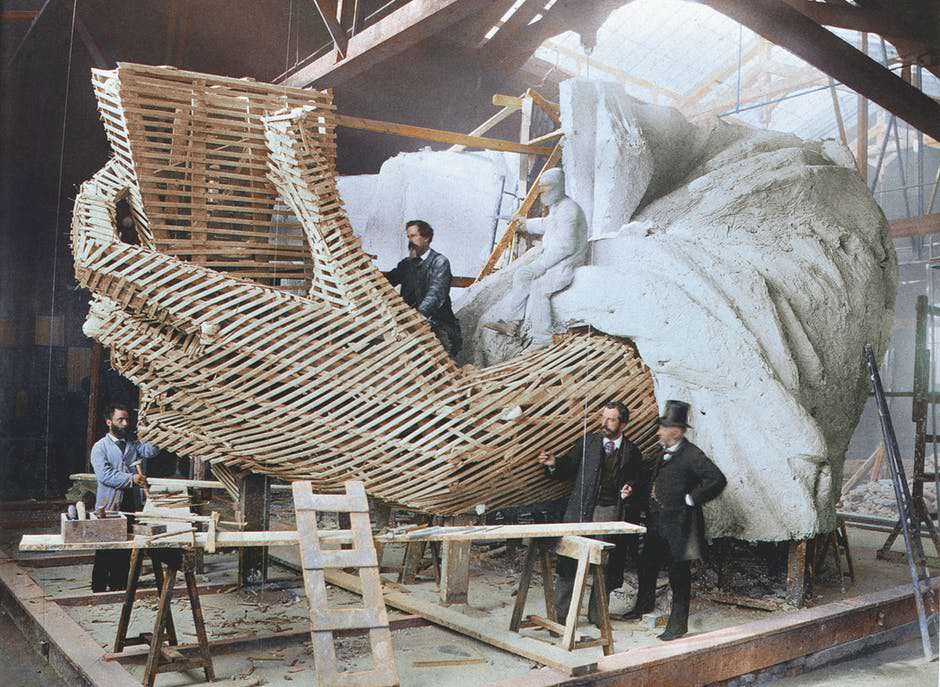 The Statue of Liberty. The photo was taken in 1881 in the Paris workshop of the foundry Gaget, Gauthier & Co and shows artisans working on the left hand of the later Statue of Liberty. It holds a Tabula ansata, an inscription on the date of the American Declaration of Independence, July 4, 1776. The sculptor of the monumental neoclassical statue of the Libertas Roman goddess of liberty was Frédéric Auguste Bartholdi. The project originated as a joint project of French and American citizens. The figure was made in parts in France and later built on site in the US on the base, for which the Americans were responsible. The statue was unveiled on October 28, 1886 in New York Harbor as a landmark. Its outer shell is almost completely made of copper. Only after decades, when the copper was slowly oxidized, did we come up with the familiar green shade. Together with the base Lady Liberty measures 93 meters.
The Statue of Liberty. The photo was taken in 1881 in the Paris workshop of the foundry Gaget, Gauthier & Co and shows artisans working on the left hand of the later Statue of Liberty. It holds a Tabula ansata, an inscription on the date of the American Declaration of Independence, July 4, 1776. The sculptor of the monumental neoclassical statue of the Libertas Roman goddess of liberty was Frédéric Auguste Bartholdi. The project originated as a joint project of French and American citizens. The figure was made in parts in France and later built on site in the US on the base, for which the Americans were responsible. The statue was unveiled on October 28, 1886 in New York Harbor as a landmark. Its outer shell is almost completely made of copper. Only after decades, when the copper was slowly oxidized, did we come up with the familiar green shade. Together with the base Lady Liberty measures 93 meters. -
21.
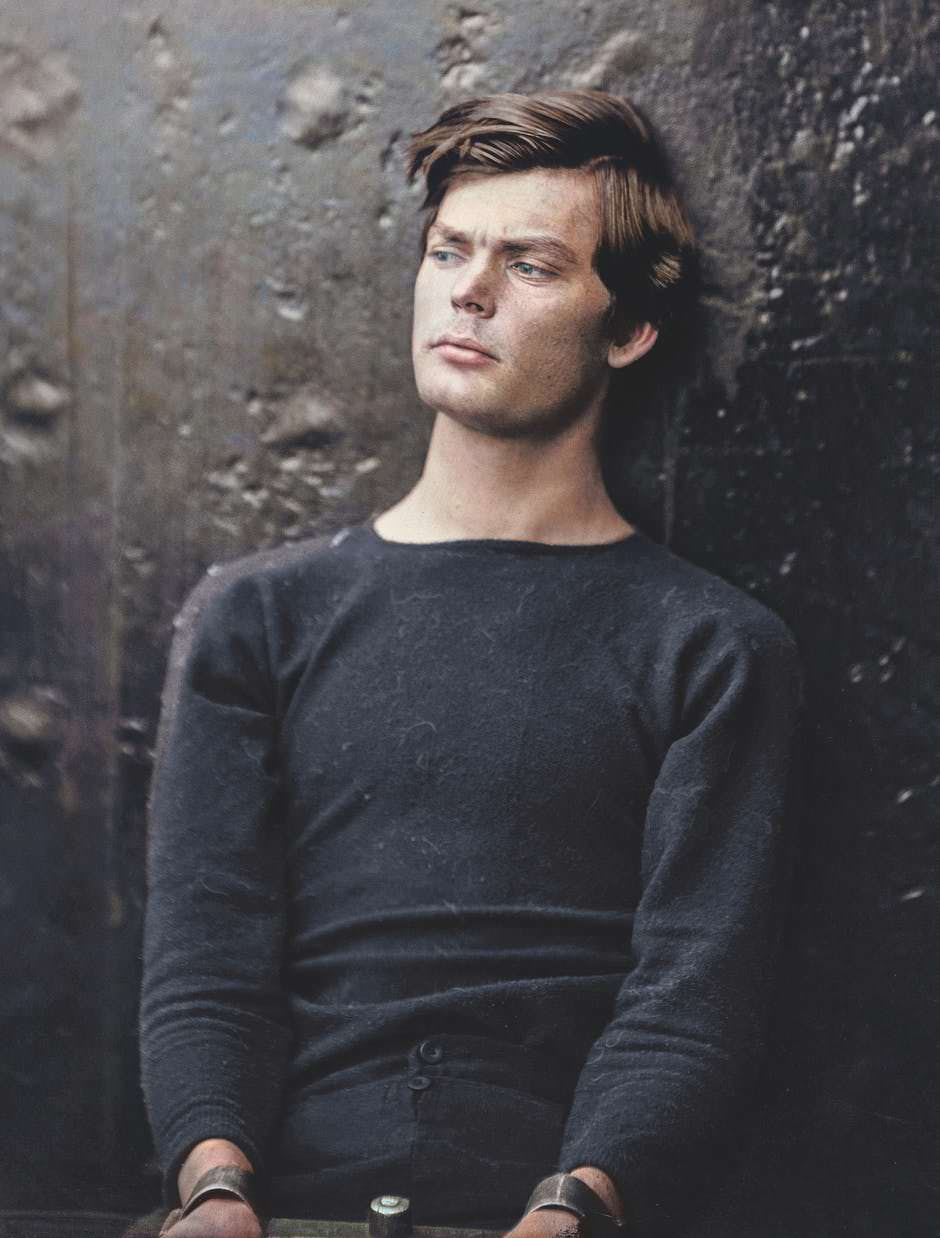 The portrait of 21-year-old Lewis Powell, a confused felon who invaded US Foreign Secretary William H. Seward's home on April 14, 1865, stabbed him with a knife. Seward survived the attack. Powell was a supporter of the Confederates, the southern states that had left the Union in 1861 in protest against Lincoln's election. This segregation resulted in a four-year civil war in which 620,000 Americans died. Powell was a veteran of the Battle of Gettysburg in 1863. His portrait was made when he waited for his trial as a prisoner on the USS Saugus.
The portrait of 21-year-old Lewis Powell, a confused felon who invaded US Foreign Secretary William H. Seward's home on April 14, 1865, stabbed him with a knife. Seward survived the attack. Powell was a supporter of the Confederates, the southern states that had left the Union in 1861 in protest against Lincoln's election. This segregation resulted in a four-year civil war in which 620,000 Americans died. Powell was a veteran of the Battle of Gettysburg in 1863. His portrait was made when he waited for his trial as a prisoner on the USS Saugus. -
22.
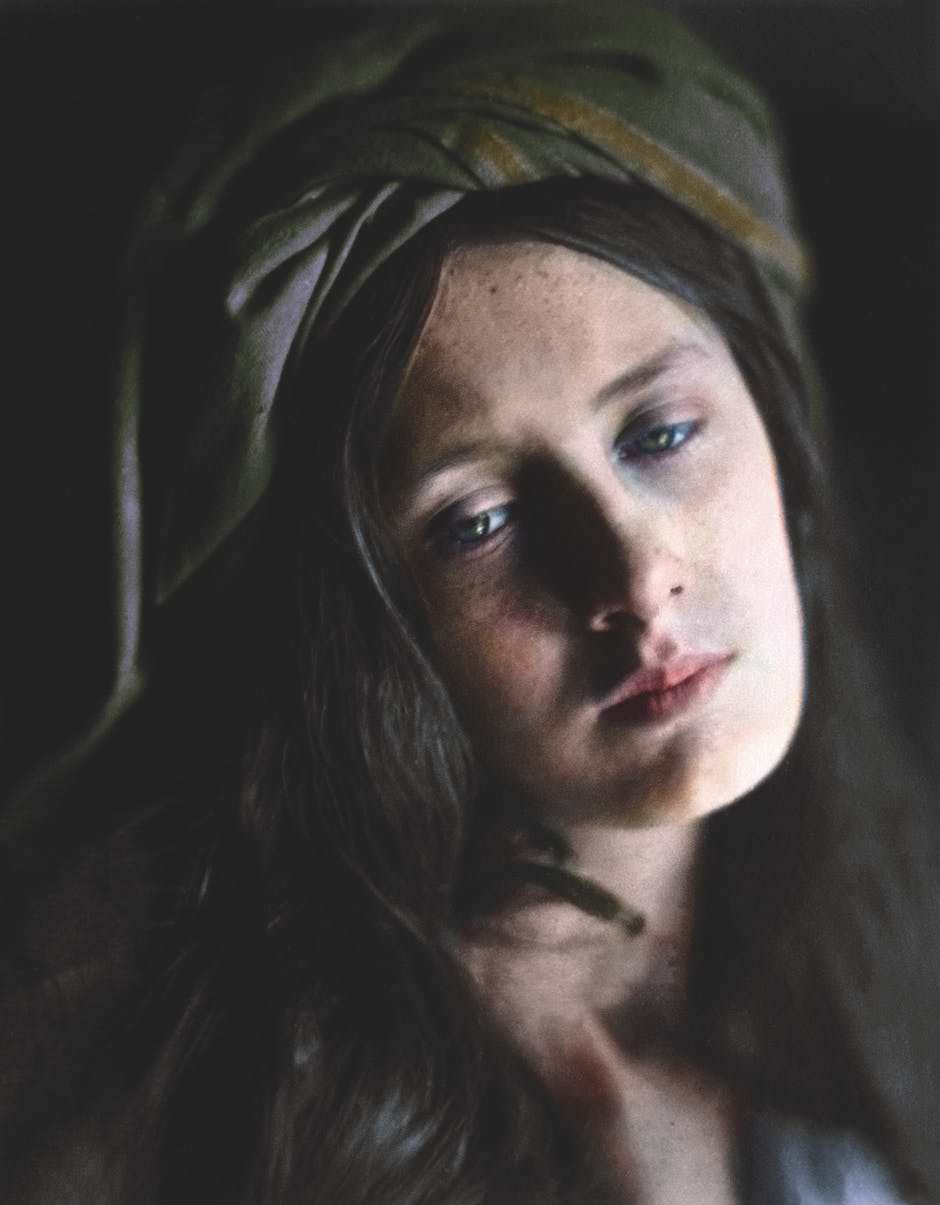 Photographer Julia Margaret Cameron (1815-1879) had two favorite models that she repeatedly photographed in the 1860s and 1870s: her two nieces Julia Jackson, who later became the mother of author Virginia Woolf(!), and May Prinsep. May posed in this photo from 1866 as Beatrice Cenci. Cameron's career was short but intense. She started photography when her children donated a camera in 1863 and stopped in 1875. Nevertheless, it is still one of the most important British photographers of the Victorian era. She was considered one of the first, whose photos not only documented facts, but also convey feelings.
Photographer Julia Margaret Cameron (1815-1879) had two favorite models that she repeatedly photographed in the 1860s and 1870s: her two nieces Julia Jackson, who later became the mother of author Virginia Woolf(!), and May Prinsep. May posed in this photo from 1866 as Beatrice Cenci. Cameron's career was short but intense. She started photography when her children donated a camera in 1863 and stopped in 1875. Nevertheless, it is still one of the most important British photographers of the Victorian era. She was considered one of the first, whose photos not only documented facts, but also convey feelings.
- REPLAY GALLERY
-

- 22 Historical Moments Brought To Life With Color
- NEXT GALLERY
-

- 11 Awesome Halloween Costumes For Cats And Dogs
"Terra Nova" The South Pole was the target of the Terra Nova Expedition by Captain Robert Falcon Scott, who launched in June 1910 with the same named vessel and a crew of 65 from Cardiff, Wales. Antarctica already had many researchers, but never before had anyone reached the South Pole, Scott wanted to be first. Shortly after landing in the Antarctic expedition photographer Herbert Posting took this photo: The view from a grotto in an iceberg on the geologist Thomas Griffith Taylor and the meteorologist Charles Wright, her ship Terra Nova can be seen in the background. On January 17, 1912, they finally reached the South Pole and came across a tent with a Norwegian flag. The explorer Roald Amundsen had come to them about five weeks earlier. On their return journey, Scott and the other men died in the ice.
22/22
1/22
Categories:
Wow


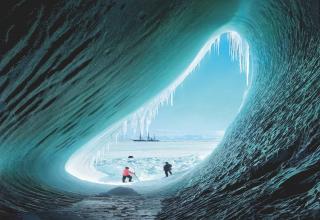
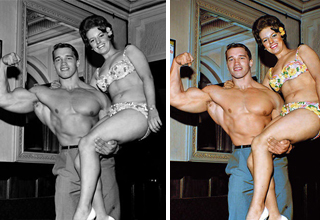
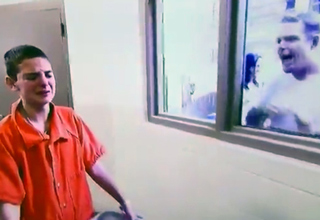


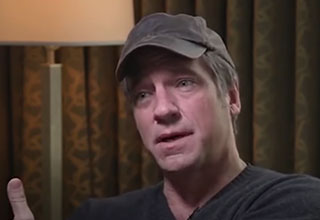
5 Comments